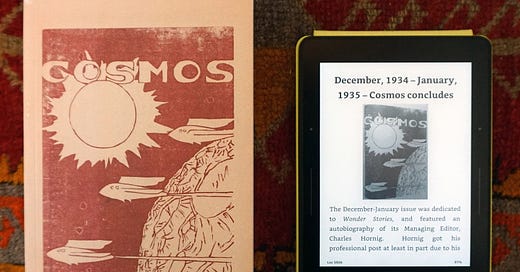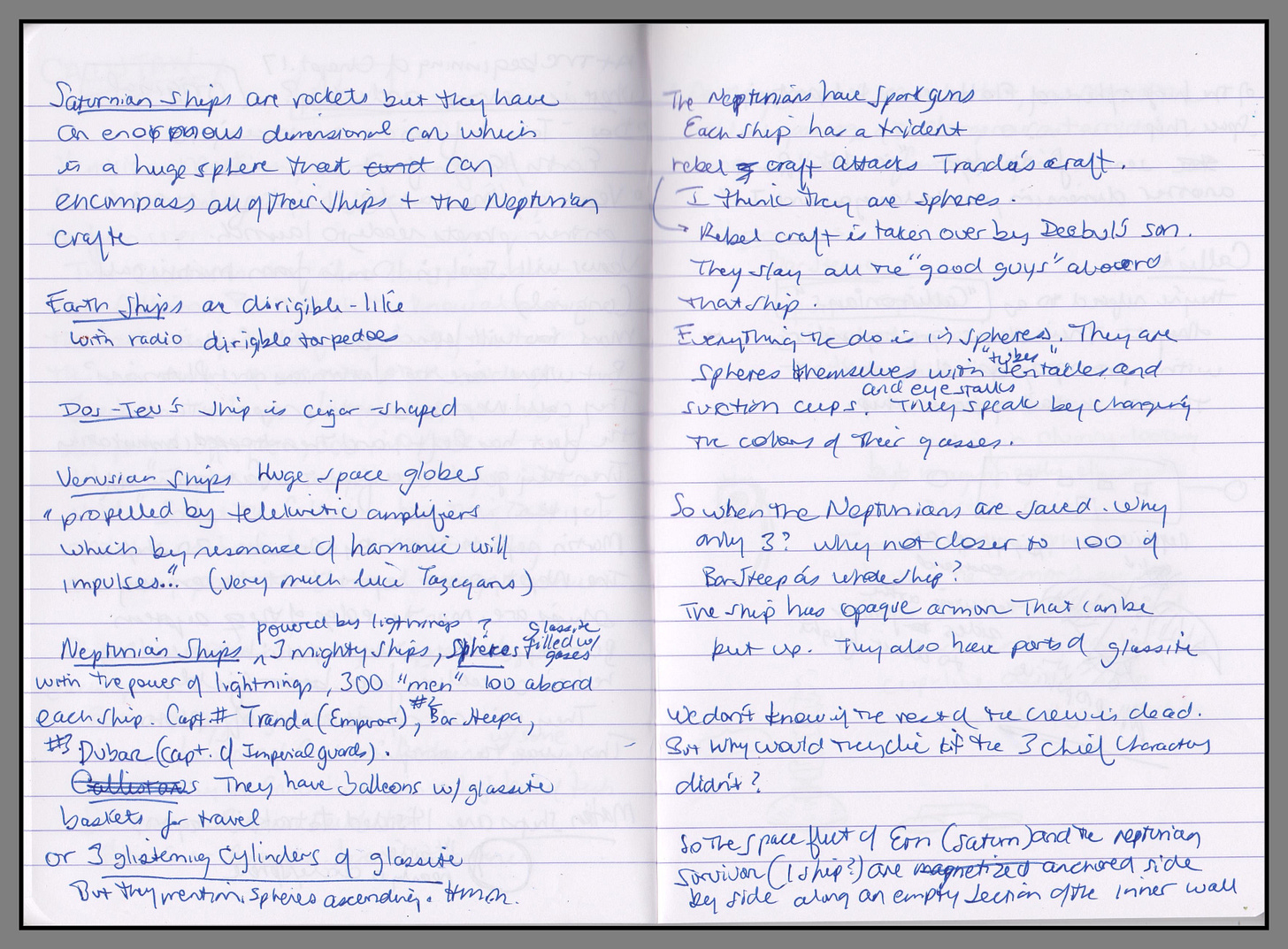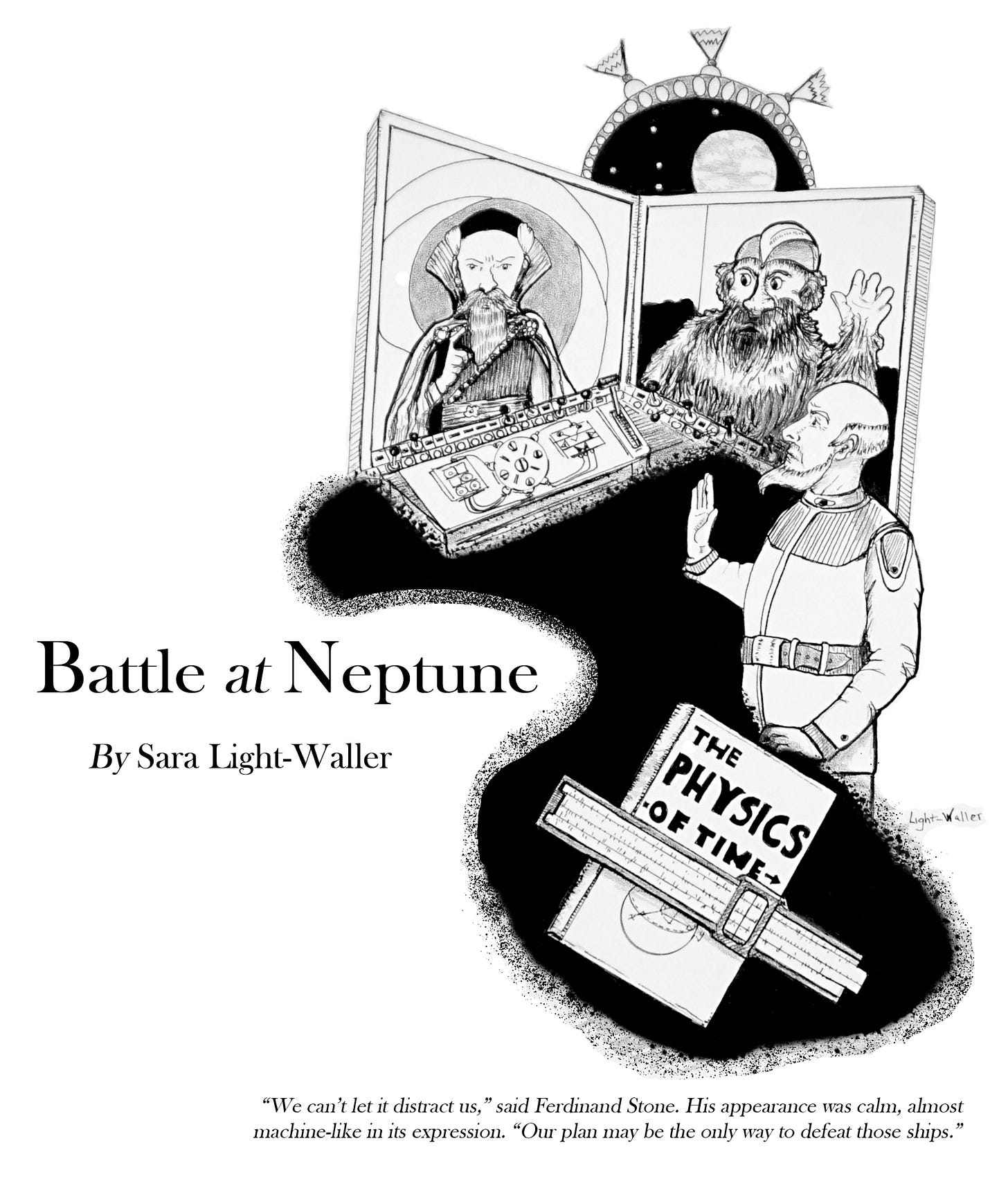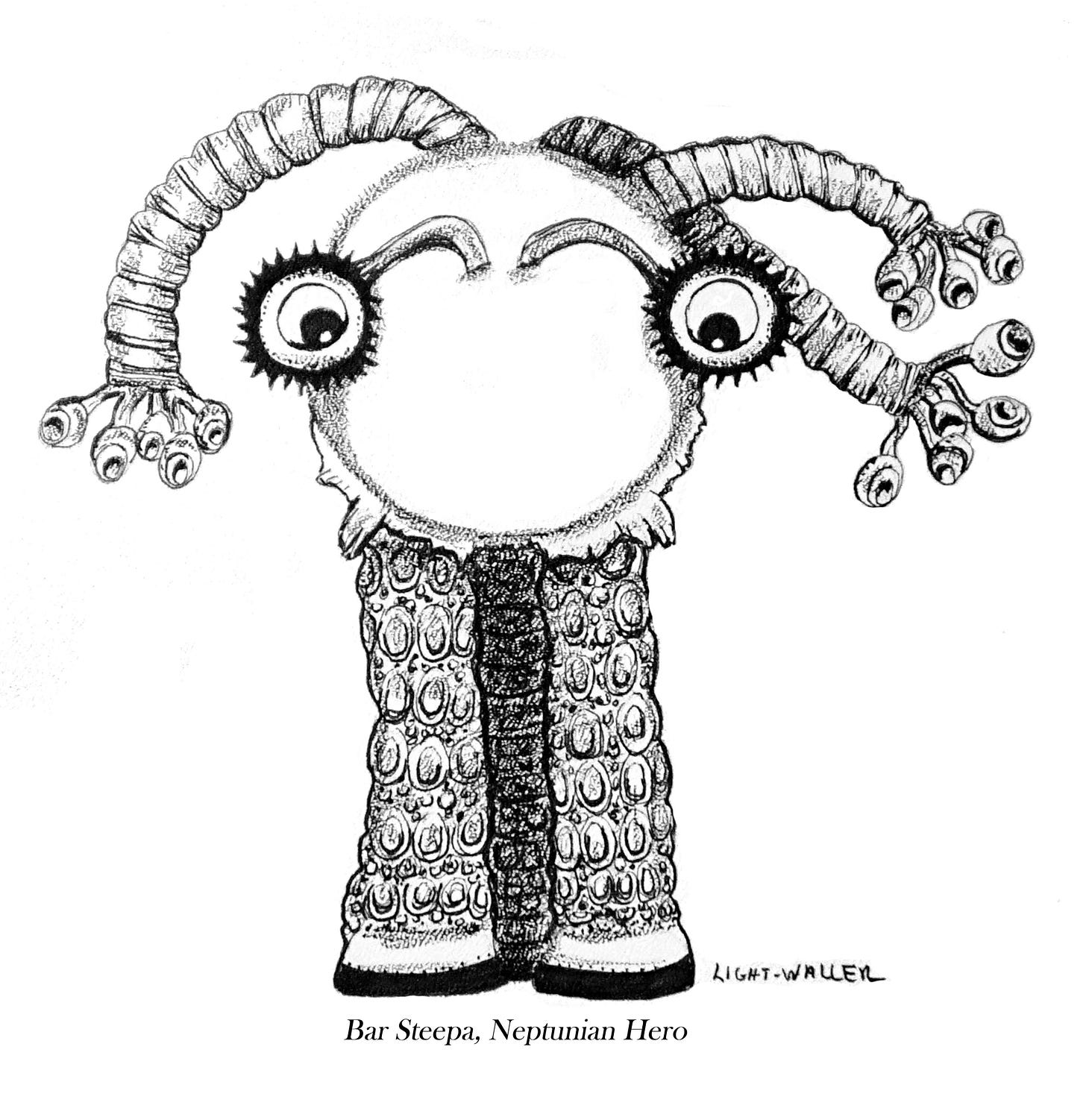I love the pulps, they’re my favorite type of stories. For most, the style is woefully out-of-date. Hell, it was out of date for many people in the 1950’s and we’re 70+ years on from that. But I love them anyway—those action-packed tales with colorful and expressive language and plots that left you feeling breathless and proud to be a human being. It’s a personal mission to try and recreate those old stories to a “T”, including the artwork.
I’ve had other new pulp creators take offense at this, assuming that my diligence is, in some way, a mark against their own methods. Not so! Each creative to their own, I say. Again, this is a personal mission and one I enjoy immensely. It is for creative enjoyment that I do it, and the desire to create good art—whether in writing or drawing/painting.
In 2020 I won the Cosmos Prize for rewriting the last chapter of COSMOS, the first shared world science fiction novel in 1933-34. Originally, the last chapter had been awarded to Edmond “Worldwrecker” Hamilton but was considered a weak effort on his part. First Fandom Experience wanted to see if anyone could rewrite it and make it fit. It was a challenge that I couldn’t ignore. I wanted to win. I did and here’s how I did it.
The first thing I did was read the entire text. What a delightful mess! The sixteen authors writing seventeen chapters were working off the editor’s (Ray Palmer’s) outline and very limited (if any) communications between themselves. Some writers dropped out along the way and had their places filled by others or the editor himself. A few of the writers grandstanded their way through their chapter. Overall, the writing is uneven and the plot leaves many hanging threads. But the story still had great pulling power, I thought. Which is why it’s an important piece of science fiction history.
The next thing I did was go through the text with a fine tooth comb and pull out all the dangling threads. Although I planned to stay true to the original idea of a culminating space battle, Hamilton’s chapter had some features that I strongly disagreed with. For example, I refused to blow up half the solar system in order to save the day. Also, I’d become attached to the Neptunian heroes and refused to destroy either them or their homeworld.
Many of the characters in the original story were underused and I determined to give a few of them a voice in my story. One was the Martian commander, Fax Gatola. I gave him the stage in an early draft and he just refused to shut up. (Characters do that sometimes, and this guy had been waiting to speak since 1933!)
Then there was the problem of a relatable human hero, a necessary feature in a story of this type. Terran Flight Commander, Alan Martin, was another underused character. I promoted him to a more classic space hero and let him have the spotlight.
The biggest dangling plot thread concerned a villain referred to as the “Wrongness of Space.” He was a weak villain but provided a valuable idea. In the original story, this being had something called a “fourth dimensional opener” which he used to exile the heroes into alternate dimensions. I dumped the villain but used the device to a good purpose in my own story.
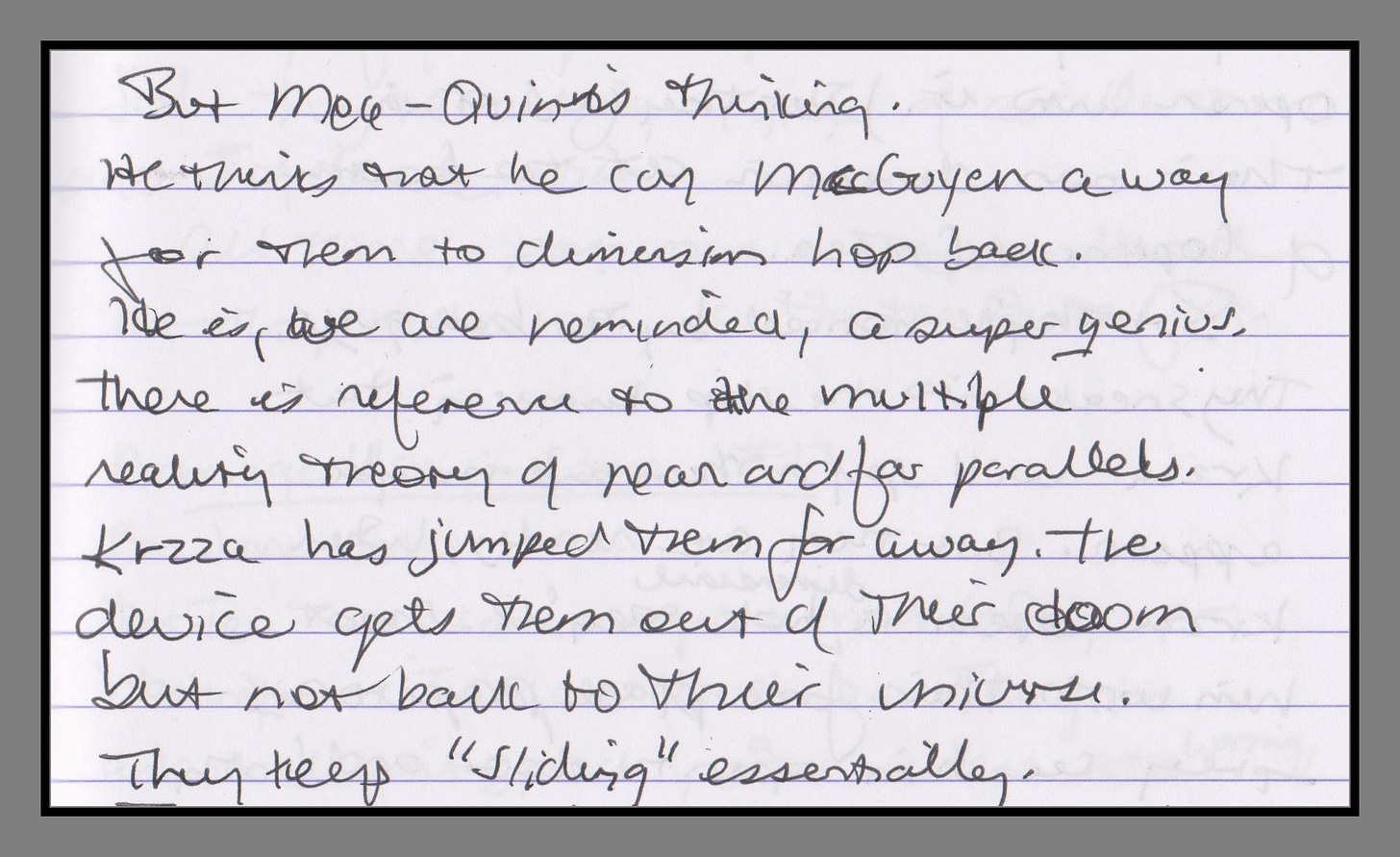
I created two new illustrations, one for the beginning and a small endpiece. The title page illustration is drawn in an Edd Cartier style. I really like Cartier’s work, his illustrations are often on the edge of humor. My scene is also on the edge of humor, showing a furry Martian, a stately Venusian, and very dry human scientist in serious discussion.
The endpiece shows the Neptunian commander—Bar Steepa. Ray Palmer, writing as “Rea Winters”, did a splendid job with the Neptunians. He turned these unhuman monsters into Burroughs-style heroes and I immediately fell in love with them. It’s impossible to know how Palmer envisioned the Neptunians but this is how I see them—cute beach balls with appendages.
The result of all of this careful work was—“Battle at Neptune” which begins like this …
Cosmos: Chapter 17
Battle At Neptune
by Sara Light-Waller
“People of Sol! Prepare to welcome your conqueror. I will accept nothing less than complete surrender. Fight me and I will destroy your planets utterly.”
The message repeated. Every ship in the Sol fleet heard it, as did the people of all habited planets. It was also heard by Dos-Tev, deposed prince of Lemnis, as he rocketed at furious speed from Luna.
Inside the small bullet-shaped craft, incredible gravitational forces tore at Dos-Tev’s body. His friends were already dead, wise Mea-Quin and brave Bullo. His heart ached with remorse, for it was he who’d insisted on this mad flight. But it was necessary to warn the fleet before it was too late.
With slow and agonizing movements he forced clumsy fingers to flick a switch and open a tight beam transmission to Ay-Artz, the Lemnisian tyrant. Dos-Tev’s vision was blurred and he leaned hard against the console for support. “You will never succeed, Ay-Artz,” he rasped. “I will stop you!”
Mocking laughter was his answer. “With one tiny ship? How will you do this, Dos-Tev?”
Dos-Tev’s head ached as if held in a contracting vise. He leaned closer to the visiplate, squinting against the dizziness. “The people of the system will fight. And they will beat you, Ay-Artz.”
“That we will see. I have scanned your ship. Your days are done. Good-bye, prince.” The transmission ended with more gloating laughter…
You can read the entire story here: https://firstfandomexperience.org/battle-at-neptune/
Wherever he is now—Heaven or Deneb—I’d like to think that Edmond Hamilton is pleased by my efforts. This is the Rocketeer signing off for today.


